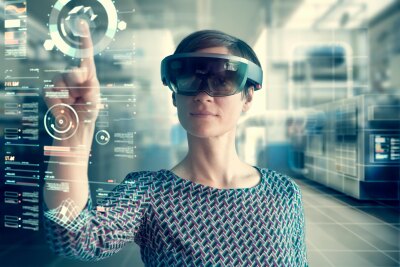
XR in Teaching & Learning Topics
XR in the Classroom
What can we do with XR?
Envision Center Projects 2022, Purdue University
XR Academy Demo
Using AR, VR, XR for Teaching Chemistry
Using AR, VR, XR for Teaching Anatomy and Physiology
Embodied Games Lab – XR for Education
Potential of XR in the Classroom
If you are interested in exploring potential applications for XR in your learning environments, the summary of strengths and limitations below may help.
Strengths of using XR in the classroom include:
High interaction. XR provides a digital space for students to perform hands-on experiential learning. This is useful if a lab section or practical assessment needs to be translated into an online format.
Accessibility options. An XR experience allows a space for 1-on-1 attention with students, without arbitrary restraints around time or location. The technology also creates a space where visual, auditory, and tactile learning all take place simultaneously, which fosters an equitable learning environment suitable for students with all learning needs. It also creates accommodations for students with mobility or transportation issues.
Logistical improvements. Depending on the deployment of hardware, the lab section of a course may be translated into a fully remote format with no requirement for physical lab space. It also may allow for pre-lab segments of assignments to better prepare students to use a physical lab space, cutting their time in the building down. Virtual labs may also save on material costs and provide a safe environment for learning the uses and dangers of hazardous materials and equipment.
Some use cases where XR does not provide specific value:
Low-interaction learning spaces. A spoken lecture or text-based learning material does not explicitly benefit from delivery via an XR format.
XR-specific accessibility concerns. XR is a medium that comes with complications when delivering content to visually impaired learners.
Logistical clutter. Staying focused on problem-solving is more important than finding a reason to port content into an XR format. Does every lecture benefit from 3D visualization? How challenging is it to translate content into an XR format; is there a technology with a lower barrier to entry that may provide similar value?
Game-Based Learning
Game-Based Learning (GBL) is an educational framework focused on full mastery of course content. The core tenets of Game-Based Learning are as follows:
Engaging content will provide more mastery in less time. If students are passionate about their studies, they’ll study harder and have lower barriers to mastery of subject matter. This methodology has demonstrably shifted the bell curve of classrooms’ scores up. This is due to a focus on pushing every student to completion, rather than attempting to pass a classroom as “good enough”.
“What if I told you that airplane you’re about to get onto; it’s an A pilot, he’s mastered the airplane ninety percent? And don’t worry, the plane is in really good condition. It’s ninety percent working.” – André Thomas
Experiential learning allows for deeper understanding of subject matter. Creating an abstract space where a student can explore concepts repeatedly until they reach an understanding at their own pace allows for a wider variety of students to be “Straight A Students”. Games are, in essence, equitable for more students than a traditional learning plan. They do not discriminate in their teaching, and they use multiple methods (audible, visual, tactile) to meet a student where they’re at in their journey to mastery.
GBL synergizes greatly with XR. Oftentimes XR software will be made with the same technology as modern video games. Taking advantage of these similarities can provide students with a much more interesting and engaging path to mastering their plan of study.
Module Navigation
- Next Module: Equipment
- Previous Module: Extended Reality (XR)
- Current Topic: XR in Teaching & Learning
- Next Topic:
Leave Your Feedback
You must be logged in to post a comment.